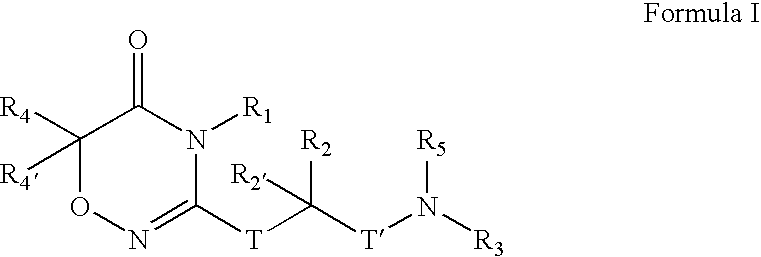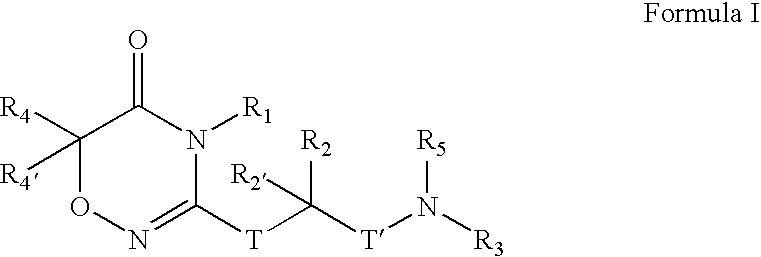Compounds, Compositions, and Methods
a technology of compositions and compounds, applied in the field of compositions and methods, can solve the problems of limiting the usefulness of compounds, inducing cancer cell death, and inhibiting cancer cell division
- Summary
- Abstract
- Description
- Claims
- Application Information
AI Technical Summary
Benefits of technology
Problems solved by technology
Method used
Image
Examples
example 1
Synthesis of Compounds
[0406]
[0407] To a solution of CBZ-Valine (2, 50 g, 200 mmol) in THF (700 mL) were added ethyl chloroformate (23 mL, 240 mmol) and triethylamine (33.5 mL, 240 mmol) at 0° C. The reaction mixture was stirred under nitrogen. After 1 h, benzylamine (26.2 mL, 240 mmol) was added over 5 minutes. Upon completion of addition, the reaction solution was allowed to warm to room temperature. After 1 h, the reaction mixture was filtered. The precipitate was washed with water and THF, and dried in vacuo to give 3 (60 g; 88%) as a white solid. LRMS (M+H+), m / z 341.1.
[0408] To a suspension of 3 (20 g, 59 mmol) in CH2Cl2 (500 mL) was added triethyloxonium hexafluorophosphate (25 g, 100 mmol).The resulting mixture was stirred for 14 h. The reaction mixture was washed with saturated NaHCO3 and brine, dried over Na2SO4, and concentrated to give 4 (19 g), which was used in the next step without further purification. LRMS (M+H+), m / z 369.1.
[0409] To a solution of above crude 4 (3...
example 2
Inhibition of Cellular Viability in Tumor Cell Lines Treated with KSP Inhibitors
[0414] Materials and Solutions: [0415] Cells: SKOV3, Ovarian Cancer (human). [0416] Media: Phenol Red Free RPMI+5% Fetal Bovine Serum+2 mM L-glutamine. [0417] Colorimetric Agent for Determining Cell Viability: Promega MTS tetrazolium compound. [0418] Control Compound for max cell kill: Topotecan, 1 μM.
Procedure: Day 1—Cell Plating:
[0419] Adherent SKOV3 cells are washed with 10 mLs of PBS followed by the addition of 2 mLs of 0.25% trypsin and incubation for 5 minutes at 37° C. The cells are rinsed from the flask using 8 mL of media (phenol red-free RPMI+5% FBS) and transferred to fresh flask. Cell concentration is determined using a Coulter counter and the appropriate volume of cells to achieve 1000 cells / 100 μL is calculated. 100 μL of media cell suspension (adjusted to 1000 cells / 100 μL) is added to all wells of 96-well plates, followed by incubation for 18 to 24 hours at 37° C., 100% humidity, and ...
example 3
Monopolar Spindle Formation following Application of a KSP Inhibitor
[0423] Human tumor cells Skov-3 (ovarian) were plated in 96-well plates at densities of 4,000 cells per well, allowed to adhere for 24 hours, and treated with various concentrations of the test compounds for 24 hours. Cells were fixed in 4% formaldehyde and stained with antitubulin antibodies (subsequently recognized using fluorescently-labeled secondary antibody) and Hoechst dye (which stains DNA).
[0424] Visual inspection revealed that the compounds caused cell cycle arrest in the prometaphase stage of mitosis. DNA was condensed and spindle formation had initiated, but arrested cells uniformly displayed monopolar spindles, indicating that there was an inhibition of spindle pole body separation. Microinjection of anti-KSP antibodies also causes mitotic arrest with arrested cells displaying monopolar spindles.
PUM
| Property | Measurement | Unit |
|---|---|---|
| temperature | aaaaa | aaaaa |
| temperature | aaaaa | aaaaa |
| enantiomeric excess | aaaaa | aaaaa |
Abstract
Description
Claims
Application Information
 Login to View More
Login to View More - R&D
- Intellectual Property
- Life Sciences
- Materials
- Tech Scout
- Unparalleled Data Quality
- Higher Quality Content
- 60% Fewer Hallucinations
Browse by: Latest US Patents, China's latest patents, Technical Efficacy Thesaurus, Application Domain, Technology Topic, Popular Technical Reports.
© 2025 PatSnap. All rights reserved.Legal|Privacy policy|Modern Slavery Act Transparency Statement|Sitemap|About US| Contact US: help@patsnap.com



